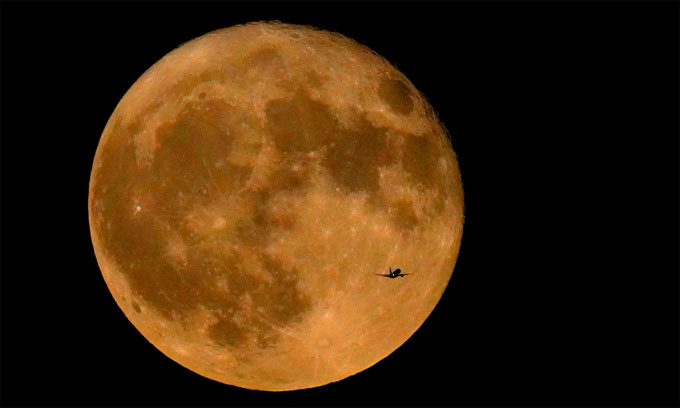A Supermoon occurs when the Moon is both full and at its perigee (the closest point to Earth in its orbit), which will take place on August 1 and August 30.
The first Supermoon appears on August 1, when the Moon rises in the southeast. This celestial body will appear larger and brighter because it is closer to Earth than usual, at a distance of only 357,530 km. Meanwhile, the average distance between the Earth and the Moon is 384,400 km.
The Moon will get even closer on August 30, at just 357,344 km from Earth. Since this is the second full moon in the same month, it is referred to as a Blue Moon.

An airplane flying northwest over Lake Michigan, with the Supermoon in the background on July 3, 2023. (Photo: AP Photo/Charles Rex Arbogast).
“Summer nights are the perfect time to watch the full moon rise in the eastern sky just a few minutes after sunset. And this happens twice in August,” said Fred Espenak, a retired NASA astrophysicist.
The last time two Supermoons occurred in the same month was in 2018. This will not happen again until 2037, according to Italian astronomer Gianluca Masi, founder of the Virtual Telescope Project.
The first Supermoon of this year occurred in July. The fourth and final Supermoon of the year will take place in September. The two Supermoons in August will come closer to Earth than the previous two.
Espenak noted that if the sky is clear, binoculars or telescopes can enhance the viewing experience, revealing features such as the lunar maria – dark plains formed by ancient volcanic lava flows – and rays emanating from craters on the Moon.
The August full moon is also known as the Sturgeon Moon, according to the Old Farmer’s Almanac. This name comes from the abundant sturgeon fish appearing in the Great Lakes – the five largest freshwater lakes in North America – during August for centuries.


















































